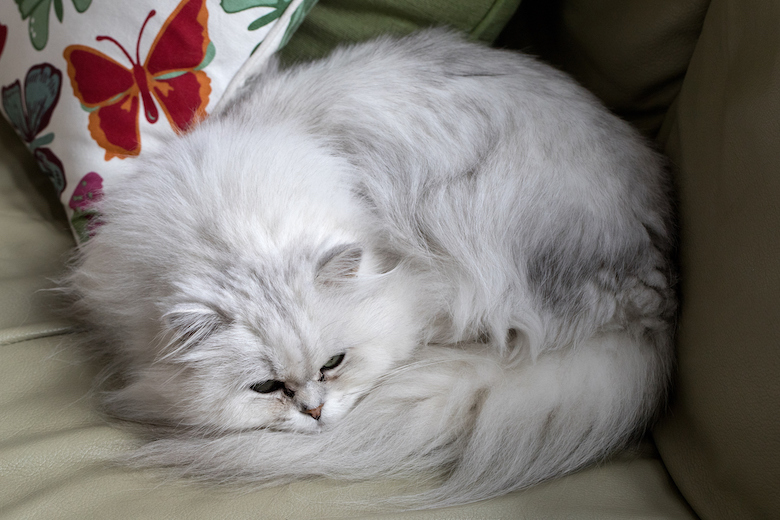The Look of a Chantilly/Tiffany
Nicknamed the chocoholic’s delight, the Chantilly/Tiffany’s color palette has expanded from its original solid chocolate to include solid black, cinnamon, blue, lilac and fawn. It’s also seen in mackerel, ticked and spotted tabby.
As the cat matures, the semi-long coat forms a neck ruff and ear furnishings in lighter shades and “petticoats” on the hind legs. The soft, silky coat reaches its full growth when the cat is approximately 2 years old. Eye color is golden to deep yellow. Chantilly/Tiffanys generally weigh about 8 pounds.
Traits
- Silky, chocolate-colored, semi-longhaired coat
- Makes a sweet cooing or chirping noise
- Neck ruff, ear furnishings and plumed tail
- Gentle and loving
Ideal Human Companion
- People who want a lap cat
- People who plan to travel with their cat
- People with multi-pet households
- Senior citizens
What They Are Like to Live With
This is a gentle, loving cat who “speaks” with a soft chirp or coo. The Chantilly/Tiffany is devoted to its people and is known to follow its favorites from room to room. Toward strangers, it can be aloof, but it happily coexists with other animals in the household.
Not flighty or skittish, its calm, quiet nature makes it a good travel companion. At home, it enjoys any interaction with its people, whether that’s sitting with them while they watch television or playing a game of chase the toy.
Things You Should Know
The Chantilly/Tiffany is generally healthy.
The Chantilly/Tiffany’s semi-longhaired coat sheds little, resists matting and is easy to groom, needing only a thorough weekly brushing.
The Chantilly/Tiffany’s ears should be checked weekly for wax buildup, especially on the long ear tufts.
The Chantilly/Tiffany is a rare breed.
Chantilly/Tiffany History
Known as the Chantilly/Tiffany or Tiffany/Chantilly, the breed began in 1967 with a pair of “foreign longhairs” who had chocolate-brown coats and golden eyes.
Owned by New York breeder Jennie Robinson, Thomas and Shirley reproduced their good looks in their many kittens. Robinson’s cattery was later purchased by a Burmese breeder, Sigyn Lund, who began referring to the cats as Tiffanys, a reference to a well-known theater in Los Angeles that was famed for its elegance during the 1920s.
Despite Lund’s connection to the Burmese, the Tiffany has no relationship to that breed. Instead, it’s thought that the cats were the result of British crosses among Angoras, Abyssinians and Havana Browns. Lund retired from breeding in the 1980s, but the breed was carried on by breeders Tracy Oraas and Jan DeRegt.
The name Chantilly was added to the breed in 1992 to differentiate it from British cats known as Tiffanies. The names Chantilly, Tiffany, Chantilly/Tiffany and Tiffany/Chantilly all refer to the same breed. The Chantilly/Tiffany is recognized by the American Cat Fanciers Association (ACFA), American Association of Cat Enthusiasts (AACE), Cat Fanciers Federation (CFF), The International Cat Association (TICA), Traditional Cat Association (TCA) and United Feline Organization (UFO).
Top photograph: Ken Griffiths/Getty Images








